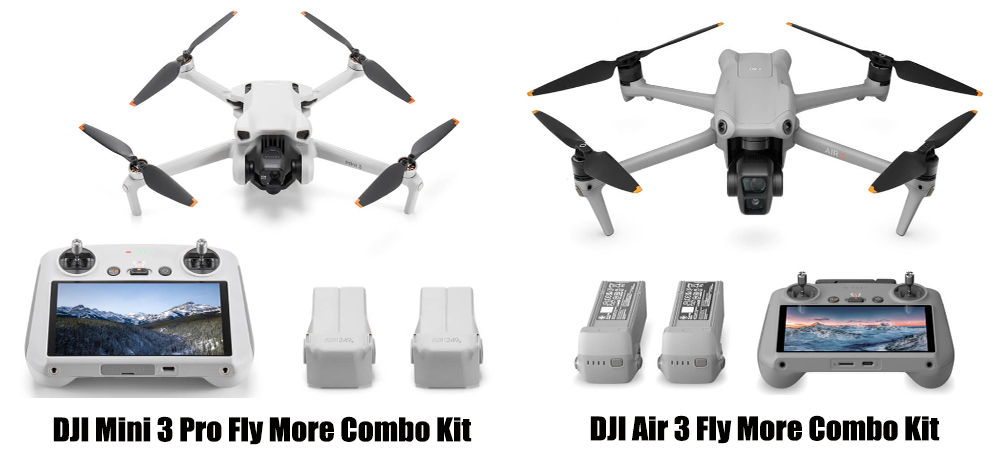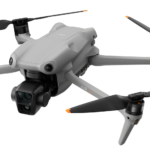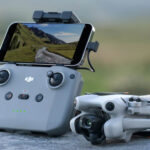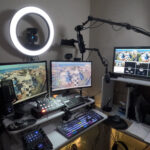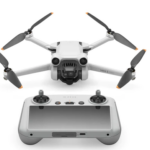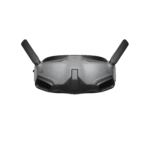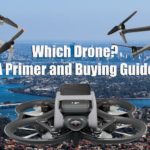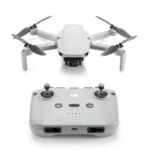In the publishing of the original story, a major edit got left out unfortunately that is quite relevant to the Air 3 specifications – that of the dual camera. Apologies for this. It is now included correctly.
With the release of the DJI Air 3, a tricky conundrum for many is to ask: “Should I buy the Mini 3 Pro or the Air 3?”
Now I don’t as yet have access to an Air 3, but I do have a Mini 3 Pro and the Air 3’s predecessor, the Air 2S, so can answer the question in part at least, and then fill in the gaps with known specifications of the Air 3.
As well as the Mini 3 Pro I have the Mini 2 and used this a lot until the Air 2S turned up, and this became my Go To unit very quickly. I found it easier to fly, the object detection is an obvious bonus, and the camera was far better. And the Air 2S just feels more solid in construct.
Then the Mini 3 Pro arrived, and things changed quite markedly, specifically in one area. For travelling, the Mini 3 Pro beats the Air 2S hands down due to its smaller size. The image quality from the camera is not as good in my opinion as the Air 2S has the bigger sensor and the on board 8GB storage is a major bonus, especially if one tends to forget to pack SD cards!
The difference in favour of the Mini 3 Pro of 3 minutes flying time I find neither here nor there as for peace of mind, I always allow a maximum of 20 minutes in the air thus allowing a decent margin of safety, but the Air 2S does have superior sensing technology over the Mini 3 Pro.
For me, though, the biggest major advantage of the Mini 3 Pro over the Air 2S has nothing to do with the camera specs, photo or video formats available of the Mini 3 over the Air 2S or even the physical size difference. It is more basic than that.
With the Mini 3 Pro having the RC-2 Controller containing the built in LCD screen as against the default RC-N2 controller for the Air 2S that needs a mobile device (smartphone or tablet running the DI Fly App), it is so much easier to simply pull the drone out of the bag, open the arms, turn it on and get flying quickly. Mere seconds in fact.
In other words, no more faffing about putting the mobile device into the controller holder, plugging in a cable, making sure everything is paired, firing up the app etc etc.
In fact the only drawback of the RC-2 controller is that you are hard wired to the DJI Fly app so cannot use a 3rd party program like Litchi which gives you advantage of waypoint navigation among other things.
But with the advent of the Air 3, this limitation has been thrown out as the latest DJI Fly app for the Air 3 supports waypoints. Big, big tick. So, even with the mucking about with a smartphone, you do get more flexible flying options. But better, there is a combo pack of the Air 3 that includes the RC-2 controller with the LCD. Even bigger tick.
Another advantage of the Air 3 is it goes one step further than the Air 2S in that the sensing system is now omni-directional – that is, an obstacle in any direction is now flagged as Danger Will Robinson thus making it safer and even easier to fly. The Mini 3 Pro only has Forward, Backward and Down.
The camera specs between the Air 3 and the Mini 3 Pro are close enough to make not a great deal of difference, so I don’t personally find one superior to the other in the stuff I shoot anyway.
But, and it’s a big one. This only applies to the main camera, as of course the Air 3 has a dual camera system with the 2nd camera, whilst still delivering 48MP does add a medium level telephoto lens equivalent to 70mm (as against 24mm) into the mix, which for some drone photographers / videographers, is a very major thing indeed.
Your needs may be very different however, so if this is the case, you need to compare and choose according to your circumstances.
The flying time of the Air 3 is superior however when using the standard batteries, at 46 minutes versus 34 minutes (if you use the Intelligent Flight Battery in the Mini 3 Pro you’ll get 47 minutes though).
So what about price? In a like for like comparison where both have the same RC-2 controller and the Fly More Combo (extra batteries, charger, spare props and bag), DJI has a price for the Air 3 of $2349. An identical Combo for the Mini 3 Pro is $1299.
So is the Air 3 worth the extra grand and a bit?
For the part time hobbyist who maybe flies for fun on weekends, takes the drone on holidays and doesn’t intend stretching it more than that, probably not. The extra advantage of the smaller size in the Mini 3 Pro for packing is a major bonus, and I’d say the added RC-2 Controller is well worth the price for the extra convenience, not to mention the brighter screen.
The Air 3 for the serious flyer is well worth the look. If you intend to try and make a few bucks out of it too, then the omni-directional sensing might be worth the extra by itself if you avoid a major stack (and don’t have the DJI Care Refresh option as a backstop). Also important may be the dual cameras.
Personally, I like the bigger drone size for its stability, more tolerance in higher wind gusts and the feeling of sensor security. But hey, I am the first to admit that I am a little over-the-top when it comes to wanting to avoid mishap,s having already dumped one $3K drone into the drink, never to be seen again (and no insurance).
Well, this is my take on the two models, but I do urge you if pondering which to get to also compare spec-for-spec in order to satisfy what you purchase does meet your needs, now and into the future.
Comments are of course welcome, especially if you think I have missed something!

